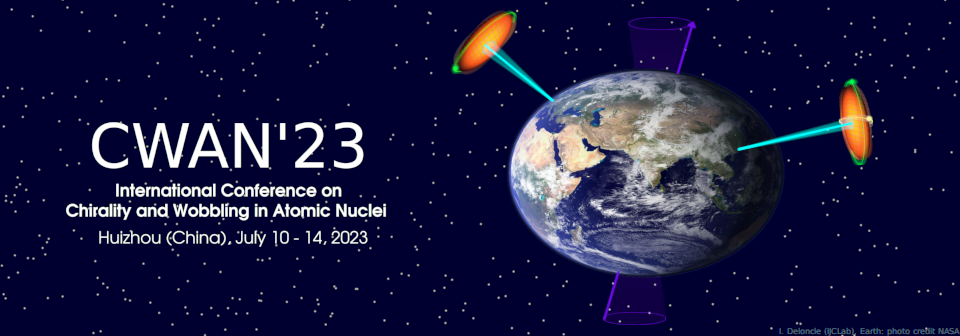Orateur
Description
The nuclei in the mass region A ∼ 125 are susceptible to shape changes due to presence of the unique parity h$_{11/2}$ orbital. Owing to the larger angular momentum of this orbital compared to the other subshells near the Fermi surface, it serves an essential role in the building up of angular momentum. It is also responsible for the observation of shape changes as protons occupying h$_{11/2}$ orbitals drive the nucleus to a prolate shape while the neutrons drive it to an oblate shape. The interplay of the opposing shape-driving effects leads to the observation of various shape-change phenomena in these nuclei.
The structure of $^{125}$Te is characterized by the coupling of a neutron hole to the even-even $^{126}$Te core. The low-spin region of the level scheme exhibits a vibrational structure. In the framework of the IBFM, this nucleus lies in the transitional region between the SU(5) (vibrational) and O(6) (γ-unstable) limits, and a transition to a triaxial shape can be expected at certain spin values. In our present work, we have populated the nuclear levels of $^{125}$Te via the reaction $^{124}$Sn(α, 3n), with the 35 MeV α beam provided by the K-130 cyclotron at VECC, India. The de-exciting γ rays were detected by the Indian National Gamma Array (INGA) spectrometer, consisting of 7 Compton-suppressed HPGe detectors- 4 detectors at 90◦, 2 at 125◦ and one detector at 40◦. The data were processed using a digital data acquisition system based on PIXIE-16(XIA LLC, USA) 12-bit 250 MHz digitizer modules. Subsequent analysis, including building the level scheme and assigning spin-parity to the levels, was done using the programs in the RADWARE package.
The previously obtained level scheme was expanded by placing 30 new γ transitions. Based on the positive parity 1/2 and 3/2 levels, two structures have been extended up to spin 19/2$^+$. These two structures have been identified as the favored and unfavored partners of the one-quasiparticle band based on the s$_{1/2}$ orbital. A comparison of the energy levels of the favored band with the ground-state band of the even-even core ($^{126}$Te) showed that this band was of a coupled nature, as also indicated by the moderate magnitude of signature splitting. Additionally, a signature inversion has been observed at spin I=15/2$\hbar$. Signature inversion is observed in nuclei that are soft w.r.t γ deformations and indicative of a rotational alignment of the quasiparticles along the total angular momentum and change to a non-axial shape. Thus, there are indications of the presence of a triaxial deformation in $^{125}$Te. Our work is currently in the preliminary stage, and further calculations are being carried out to further explore the nature of triaxiality in $^{125}$Te.

